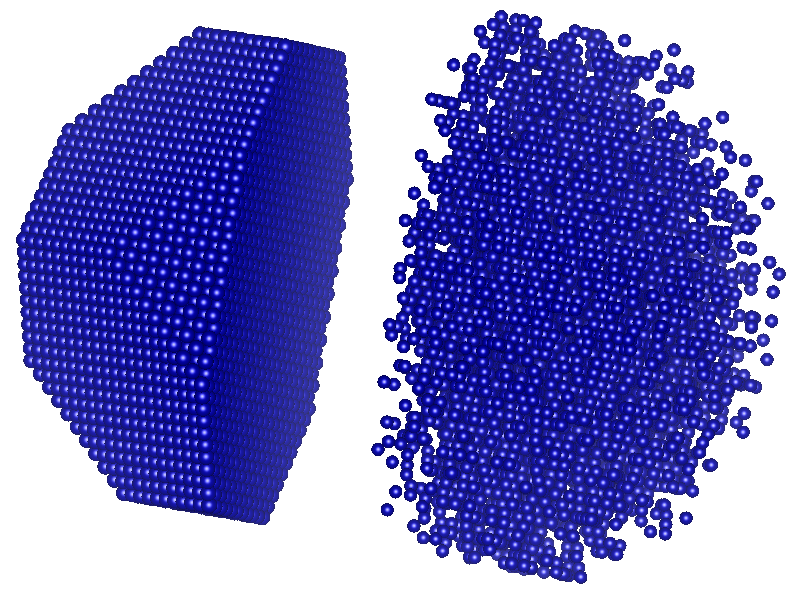
Des nanocomposites comme aimants permanents
Nanocomposites as permanents magnets
Charles Paleo, Véronique Dupuis, Olivier Boisron et Damien Le Roy (équipe Nanostructures Magnétiques), en collaboration avec des collègues de Lyon et de Grenoble, ont publié un article intitulé "Interplay between local structure and magnetic properties of graded exchange-coupled Co@FePt nanocomposite films" dans la revue Physical Review B.
Charles Paleo, Véronique Dupuis, Olivier Boisron and Damien Le Roy (team Magnetic Nanostructures), with colleagues from Lyon and Grenoble, published an article entitled "Interplay between local structure and magnetic properties of graded exchange-coupled Co@FePt nanocomposite films" in the journal Physical Review B
Depuis la découverte des aimants au néodyme il y a 30 ans et l’optimisation de leur structure, les performances des aimants permanents sont restées pratiquement inchangées. Des études théoriques prévoient qu’en combinant deux phases ferromagnétiques en un nanocomposite, il serait possible d’obtenir des aimants jusqu’à deux fois plus performants que ceux au néodyme. A cela s’ajoute les inquiétudes écologiques et politiques qui pèsent sur l’obtention de terres rares, qui appellent à l’utilisation de matériaux plus accessibles.
La préparation de ces aimants nanocomposites reste un défi car elle requiert une maîtrise de la structure à l’échelle nanométrique. Les auteurs étudient ici la possibilité d’utiliser des agrégats de cobalt de 8 nm de diamètre dans une matrice de fer-platine recuite, et étudient les effets de l’interdiffusion sur les propriétés magnétiques.
La préparation de ces aimants nanocomposites reste un défi car elle requiert une maîtrise de la structure à l’échelle nanométrique. Les auteurs étudient ici la possibilité d’utiliser des agrégats de cobalt de 8 nm de diamètre dans une matrice de fer-platine recuite, et étudient les effets de l’interdiffusion sur les propriétés magnétiques.
Since the discovery of neodymium-based magnets 30 years ago and their structural optimisation, permanent magnets performances remained virtually stagnant. Theoretical works predicted that the combination of two ferromagnetic phases in a single nanocomposite would allow the preparation of magnets far better than nowadays best neodymium magnets. Moreover, ecological and political concerns about rare-earth materials sourcing call for the use of more common materials.
Preparation of these nanocomposites magnets remains a challenge, as it requires a control of the structure at the nanometre scale. Here, the authors study the possibility to use cobalt clusters of 8 nm in an annealed iron-platinum matrix, and the effects of interdiffusion on magnetic properties.
Preparation of these nanocomposites magnets remains a challenge, as it requires a control of the structure at the nanometre scale. Here, the authors study the possibility to use cobalt clusters of 8 nm in an annealed iron-platinum matrix, and the effects of interdiffusion on magnetic properties.


















